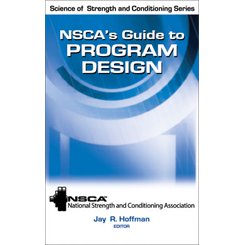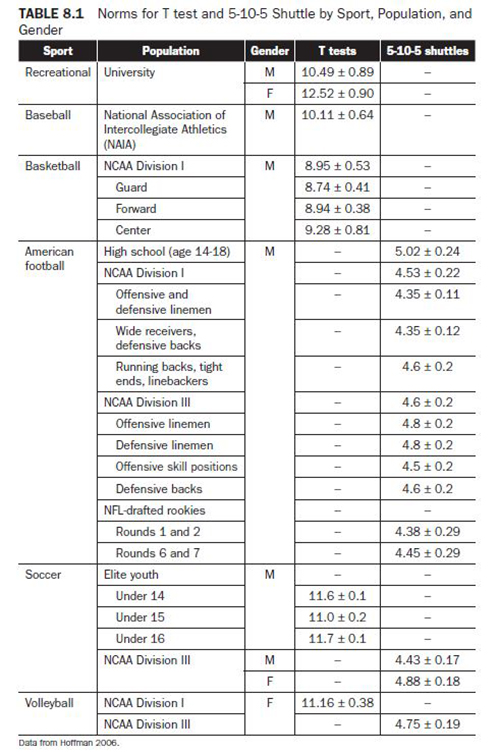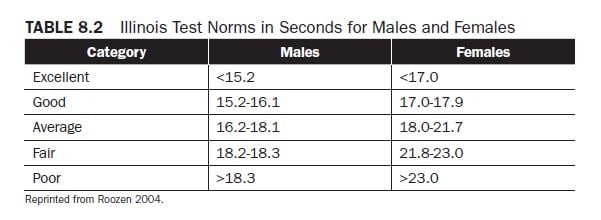Assessing Agility Using the T Test, 5-10-5 Shuttle, and Illinois Test
by NSCA's Guide to Program Design
Kinetic Select
May 2017
Before implementing an agility training program, baseline measures of change of direction ability should be assessed. This article presents norms for three tests that can be used to assess change of direction ability.
The following is an exclusive excerpt from the book NSCA's Guide to Program Design, published by Human Kinetics. All text and images provided by Human Kinetics.

Assessing Agility
Before implementing an agility training program, baseline measures of change of direction ability should be assessed so that progress may be tracked over time. Numerous agility tests exist, but each differs in terms of the length of time needed to complete the test, the number of directional changes, and the primary direction of force application (e.g., lateral, front Agility Training 145 to back) (2). Ideally, the test should be representative of what might occur during a typical competition in terms of movement patterns. The following tests have been used to assess change of direction ability:
T test.
This assessment requires the athlete to move in a T-shaped pattern (see page 43 of NSCA's Guide to Program Design for a detailed explanation of how to conduct this test). It requires lateral and front-to-back movements, and is often used as a drill and assessment for athletes in basketball and American football. For various norms, see Table 8.1.
5-10-5 shuttle.
The 5-10-5 shuttle consists of rapid directional changes in a linear plane. It is commonly used as an assessment in American football, basketball, soccer, and most other field and court sports. This test has also been referred to as the pro-agility test. It is used as part of player assessment in the NFL combine. The setup for this test is very simple since it only requires three cones that are placed 5 yards (5 m) apart in a straight line. For various norms, see Table 8.1.
Illinois test.
The Illinois test (see page 45 of NSCA's Guide to Program Design for a detailed explanation of how to conduct this test) lasts considerably longer than the T test and 5-10-5 shuttle, covers more space, consists of a greater number of changes in direction, and requires the athlete to turn in different directions and run at different angles (19). In essence, this test consists of straight sprinting and weaving around obstacles. For various norms, see Table 8.2.


Developed by the National Strength and Conditioning Association (NSCA), this text offers strength and conditioning professionals a scientific basis for developing training programs for specific athletes at specific times of year. The book is available in bookstores everywhere, as well as online at the NSCA Store.
- Privacy Policy
- Your Privacy Choices
- Terms of Use
- Retraction and Correction Policy
- © 2025 National Strength and Conditioning Association